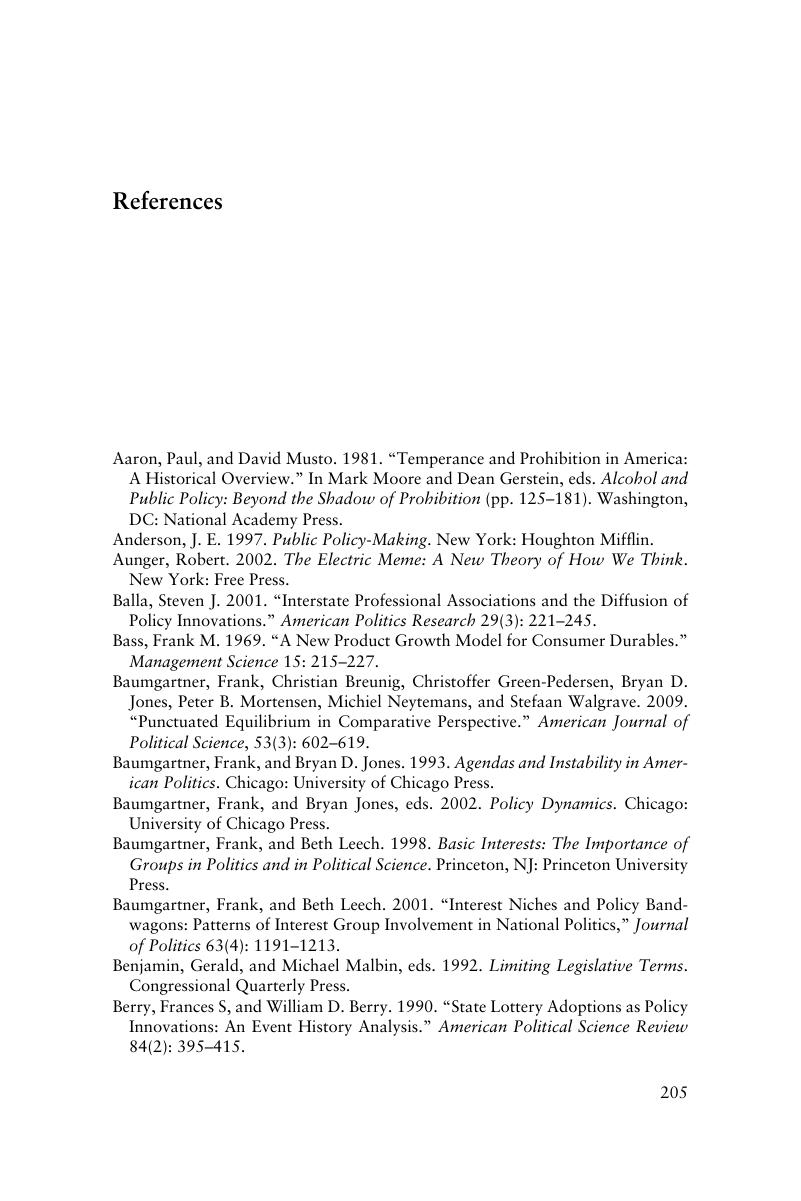Book contents
- Frontmatter
- Contents
- List of Figures
- List of Tables
- Acknowledgments
- 1 Contagion in the Laboratories of Democracy
- 2 Incrementalism and Policy Outbreaks in the American States
- 3 Policy Agents
- 4 Innovation Hosts
- 5 Policy Vectors
- 6 Conclusion
- Appendix A List of Innovations Collected
- Appendix B Policies Collected by Historical Era
- Appendix C Innovations Collected by Policy Type and Target
- Appendix D State Receptivity to Innovation Ranked by Policy Type
- References
- Index
- References
References
Published online by Cambridge University Press: 01 March 2011
- Frontmatter
- Contents
- List of Figures
- List of Tables
- Acknowledgments
- 1 Contagion in the Laboratories of Democracy
- 2 Incrementalism and Policy Outbreaks in the American States
- 3 Policy Agents
- 4 Innovation Hosts
- 5 Policy Vectors
- 6 Conclusion
- Appendix A List of Innovations Collected
- Appendix B Policies Collected by Historical Era
- Appendix C Innovations Collected by Policy Type and Target
- Appendix D State Receptivity to Innovation Ranked by Policy Type
- References
- Index
- References
Summary

- Type
- Chapter
- Information
- Policy Diffusion Dynamics in America , pp. 205 - 214Publisher: Cambridge University PressPrint publication year: 2010



